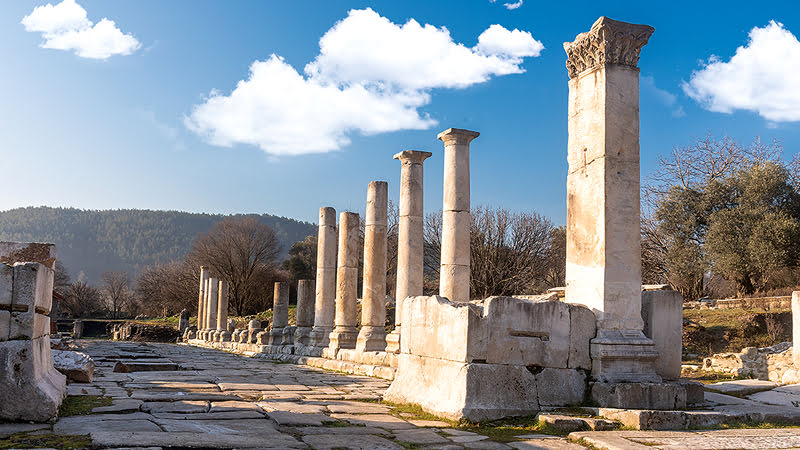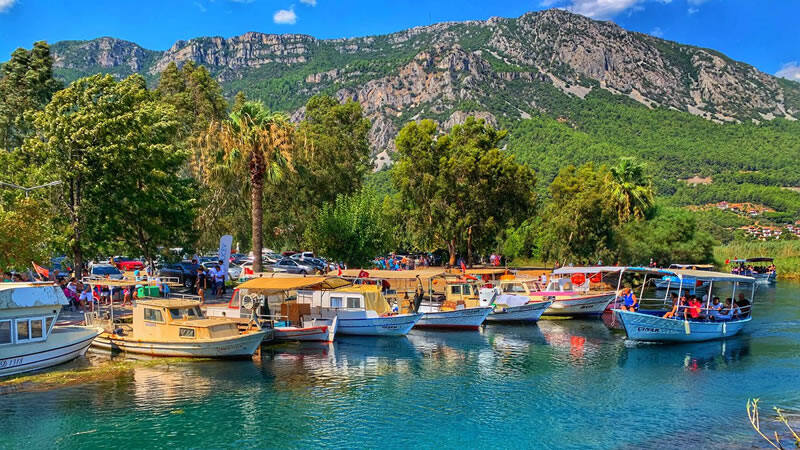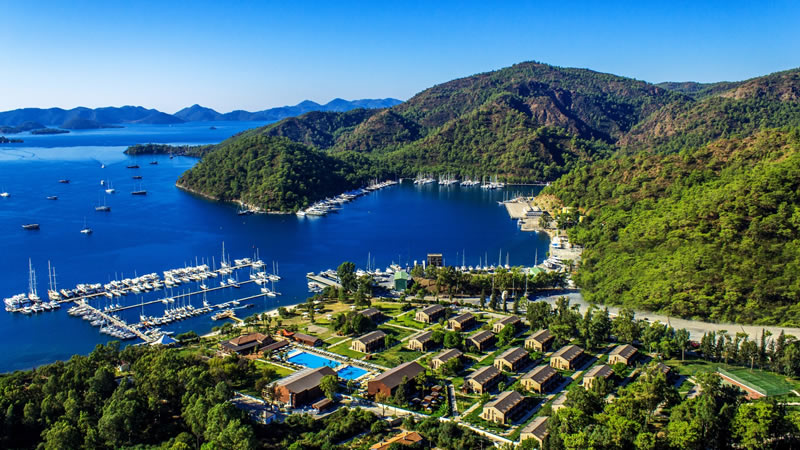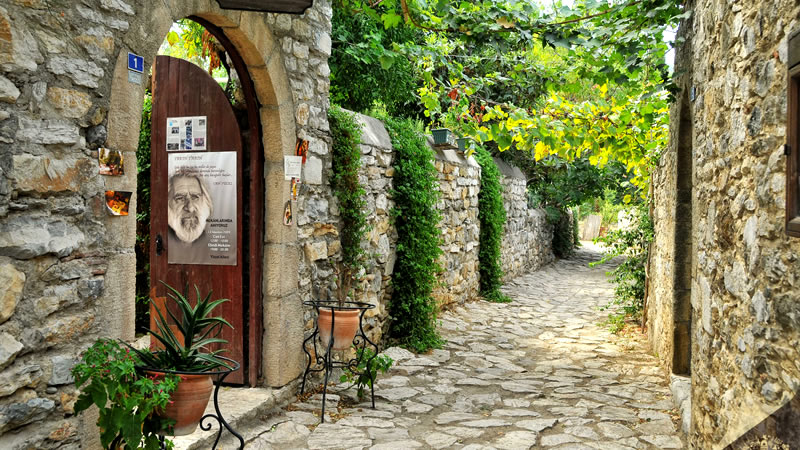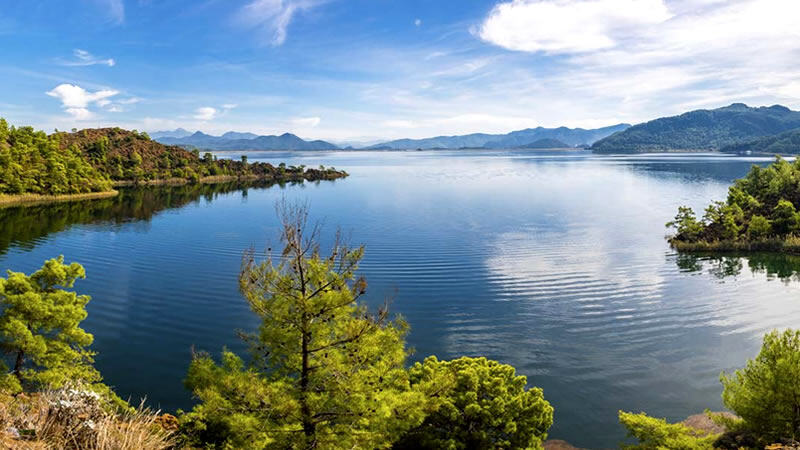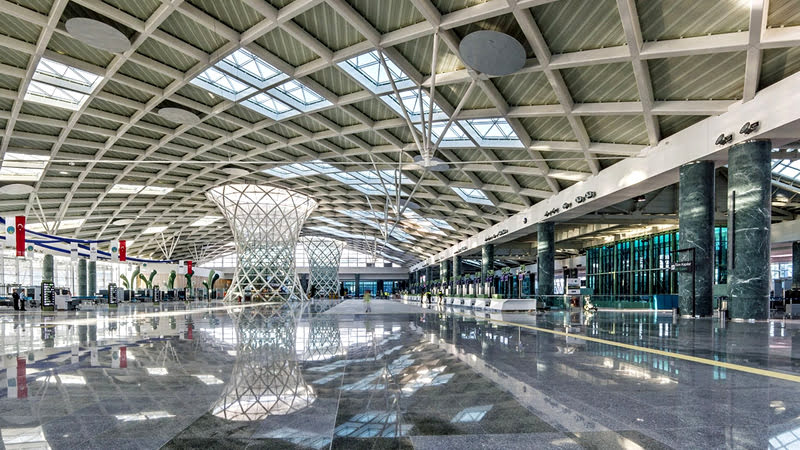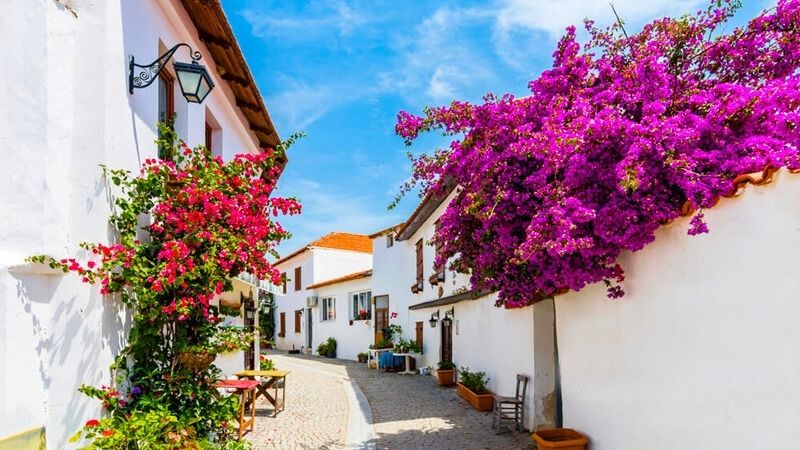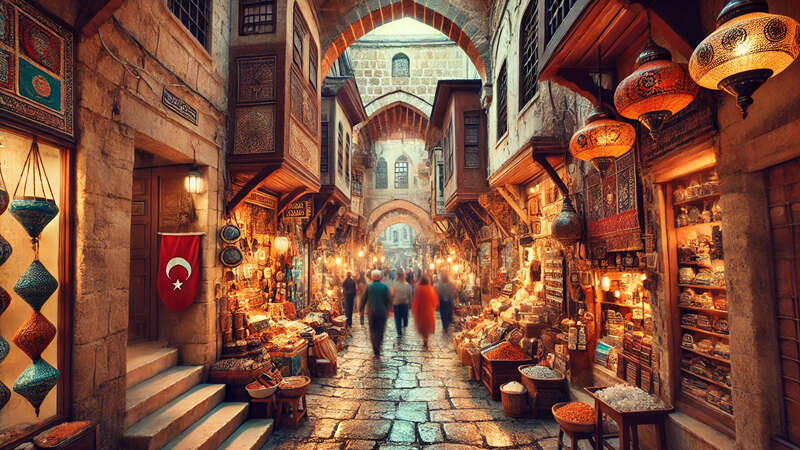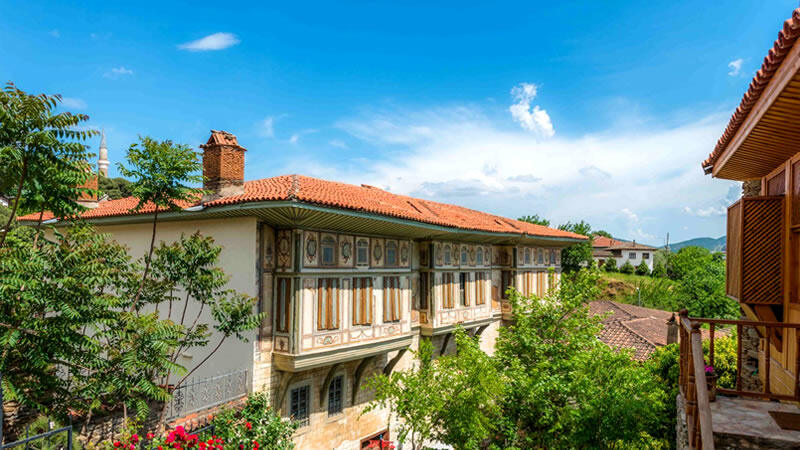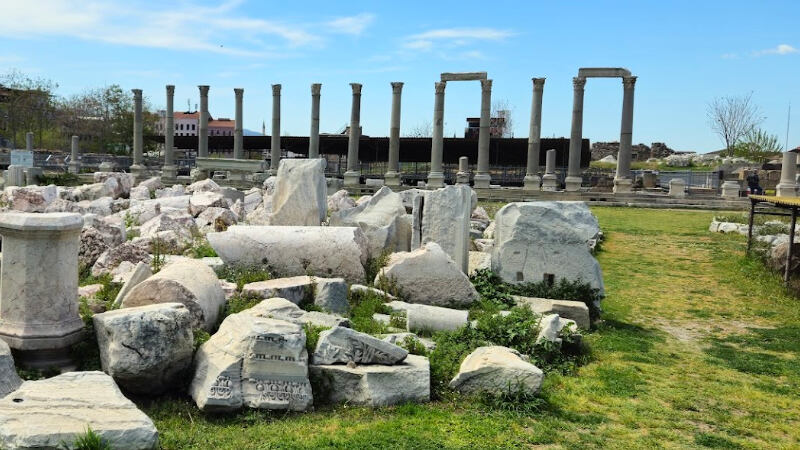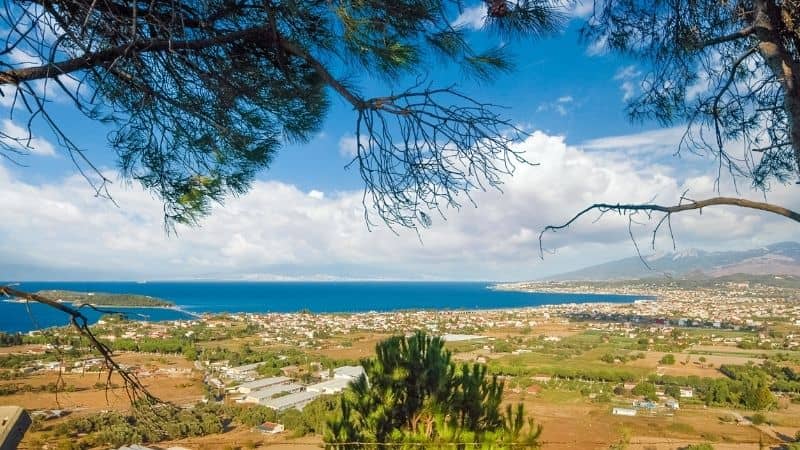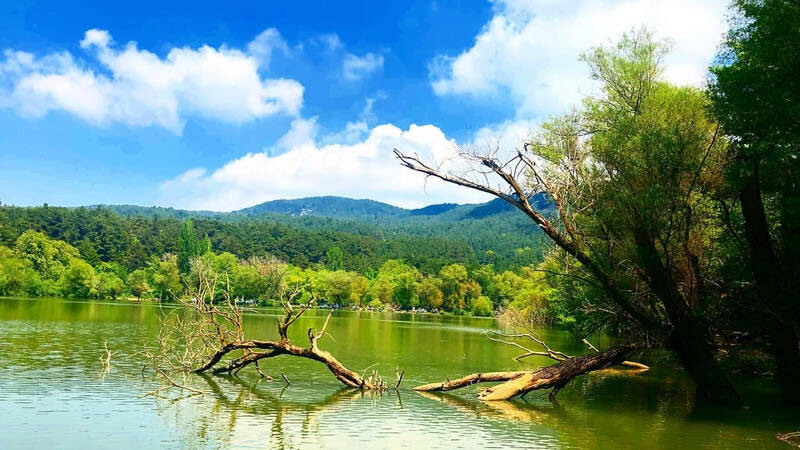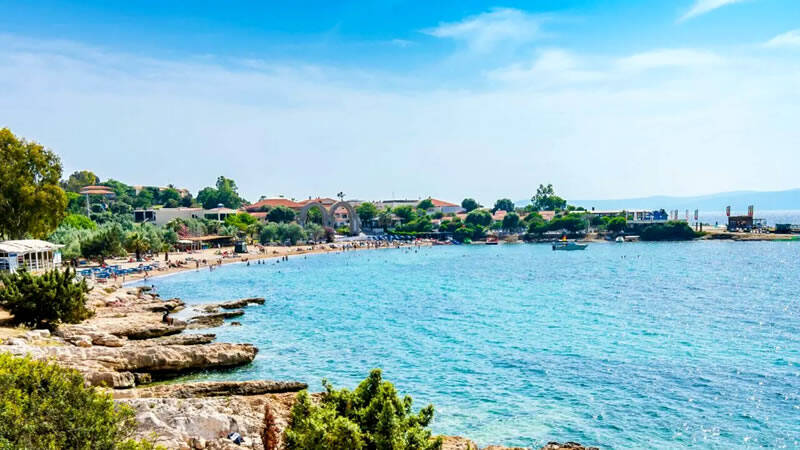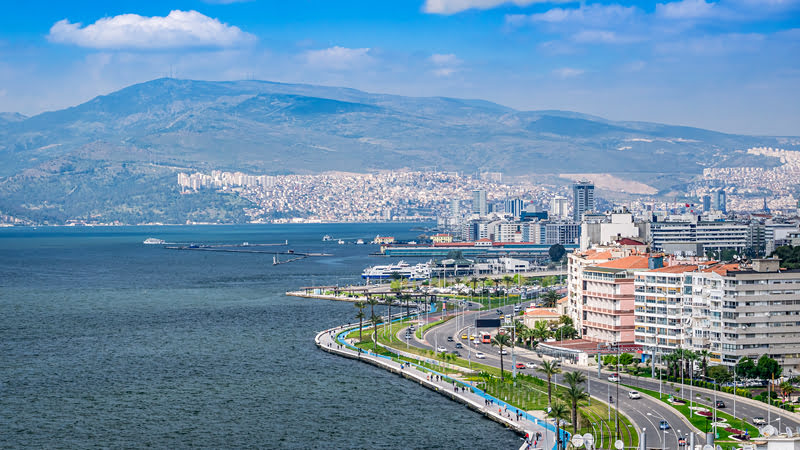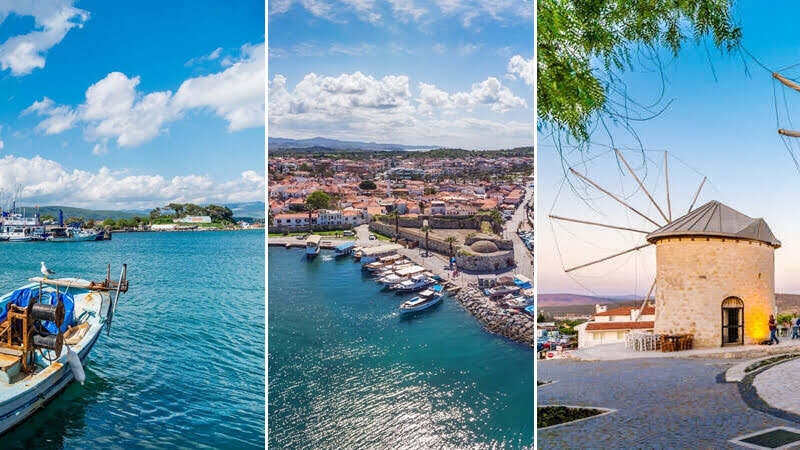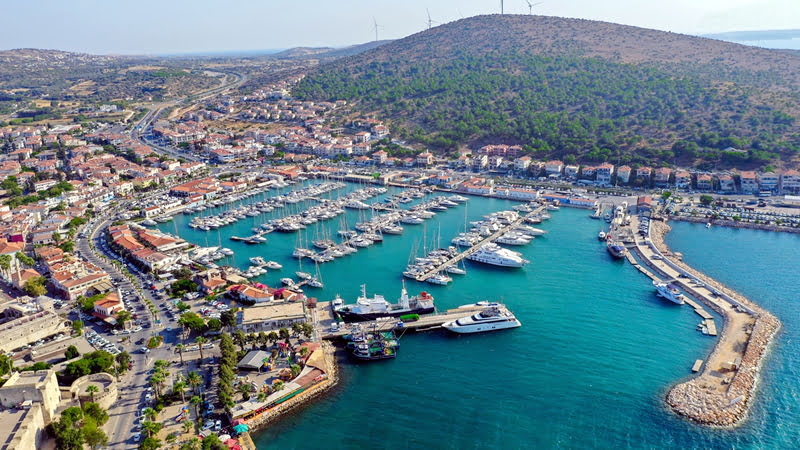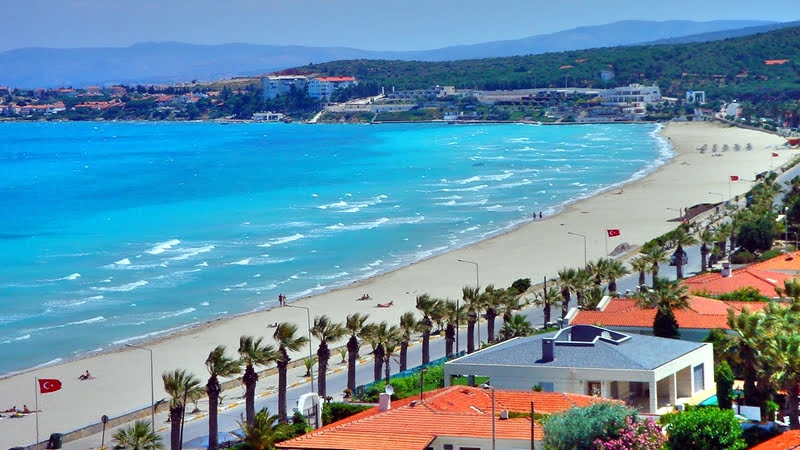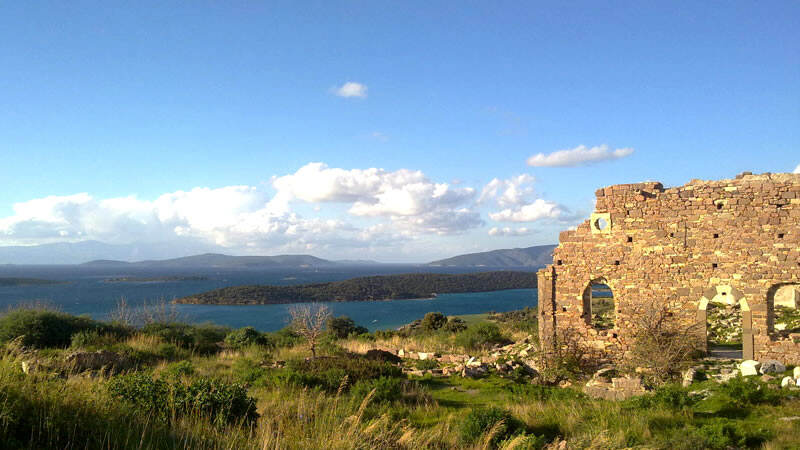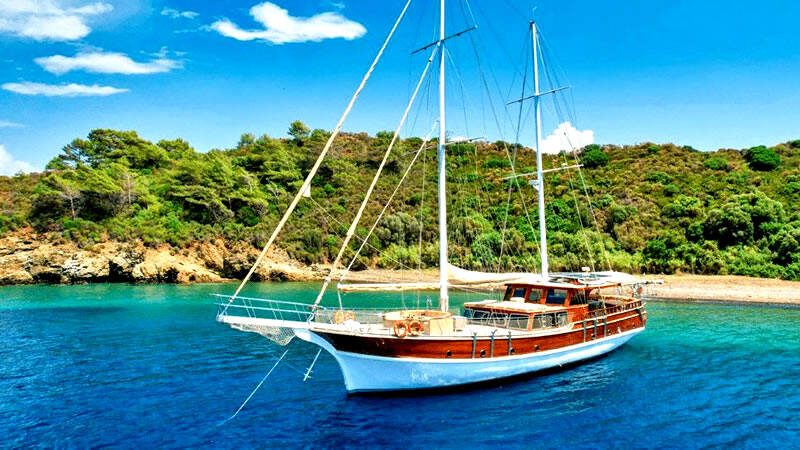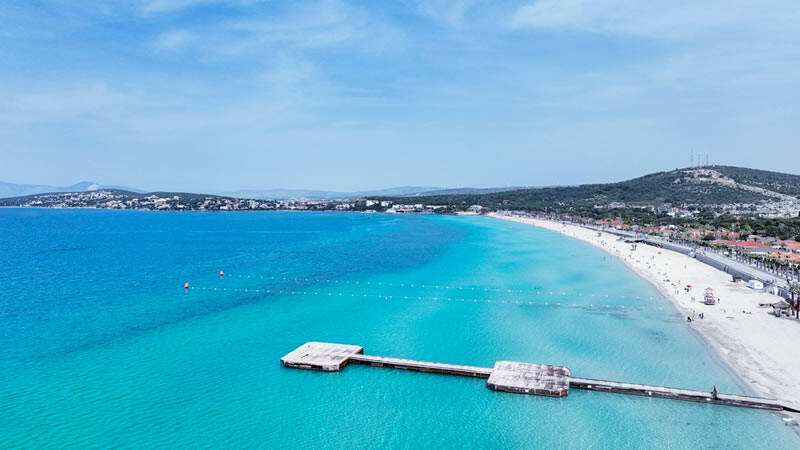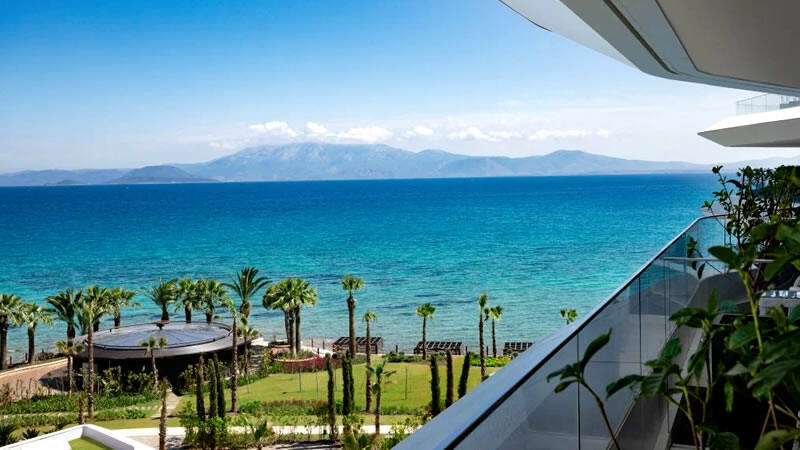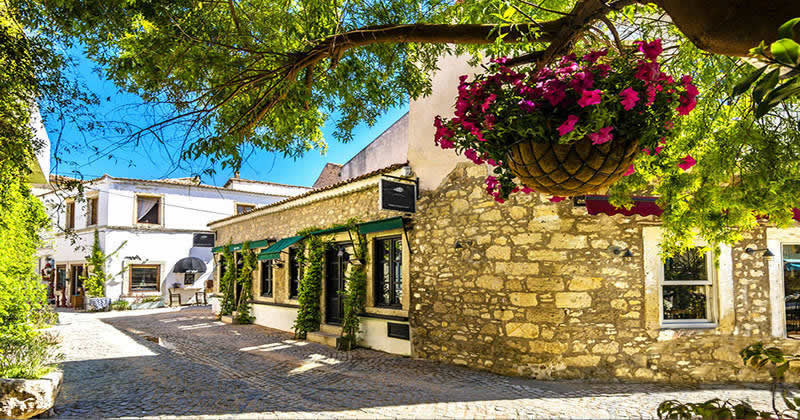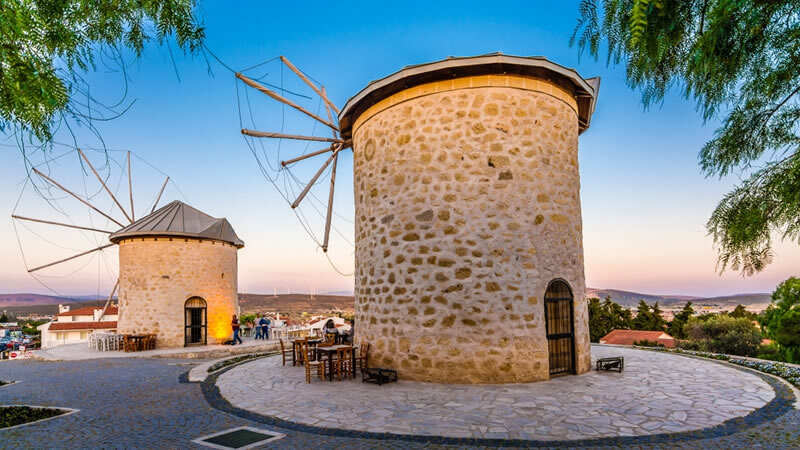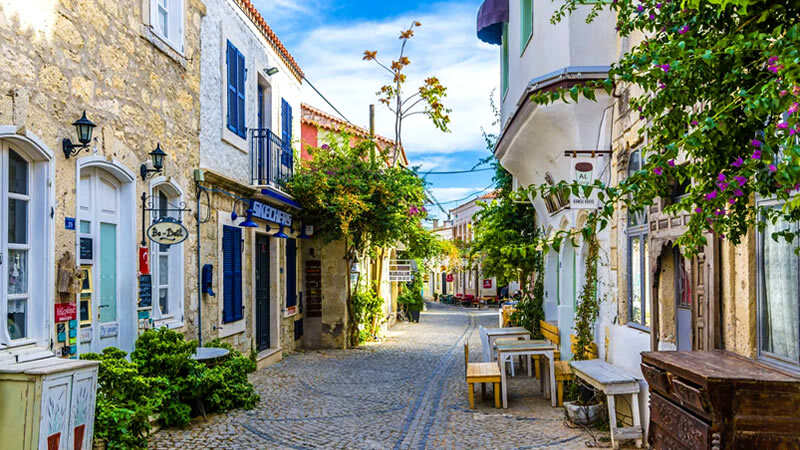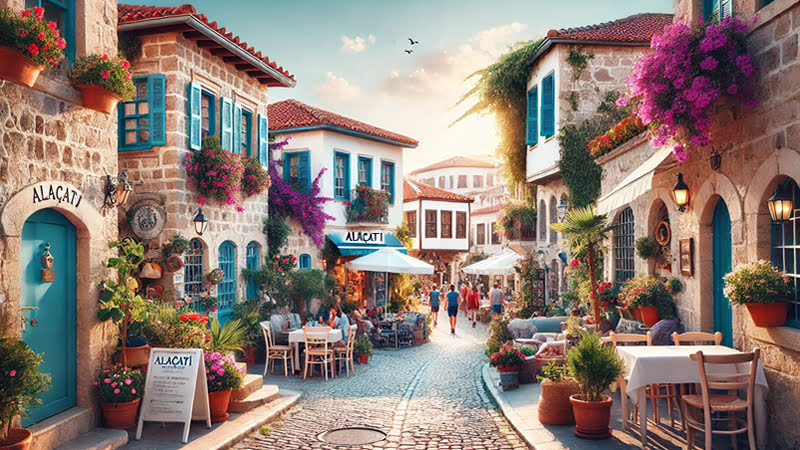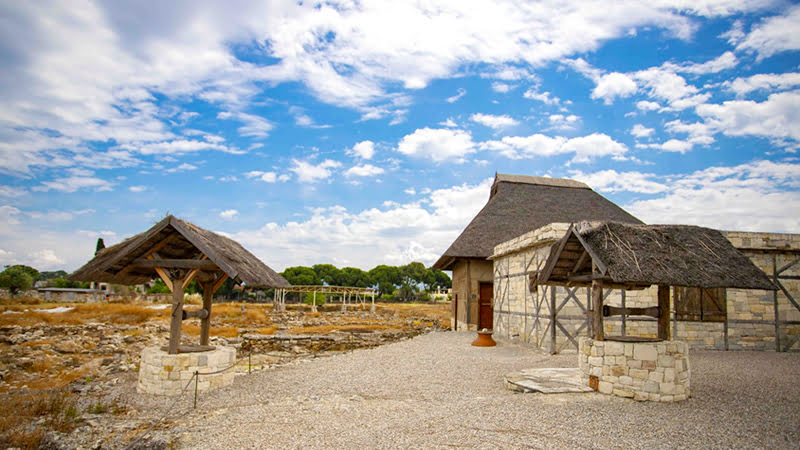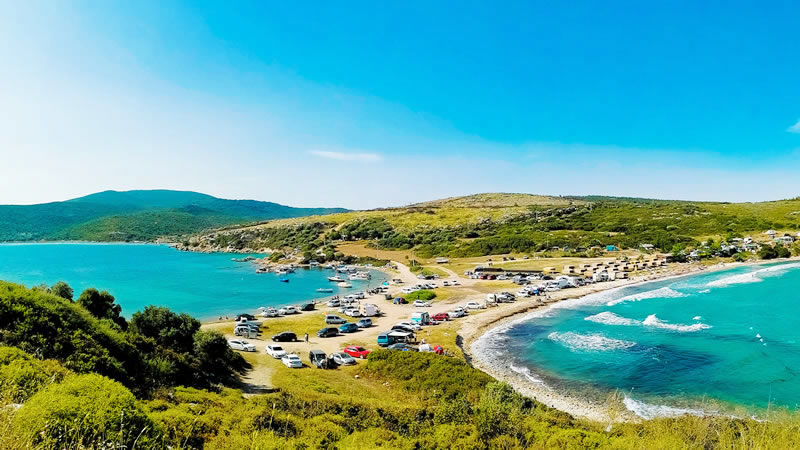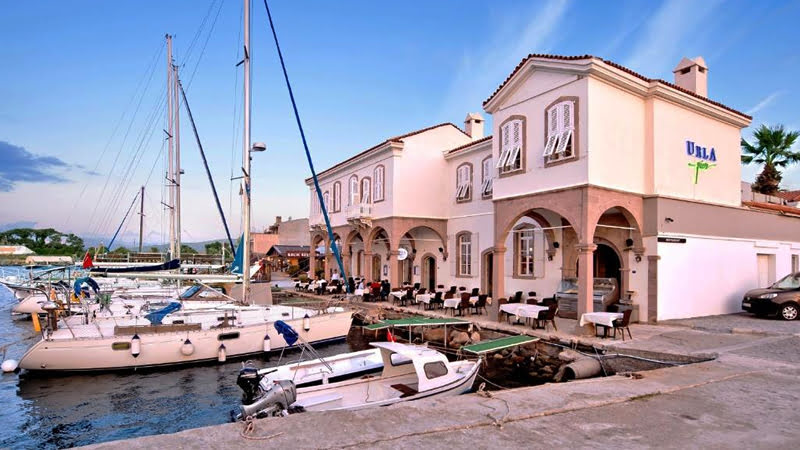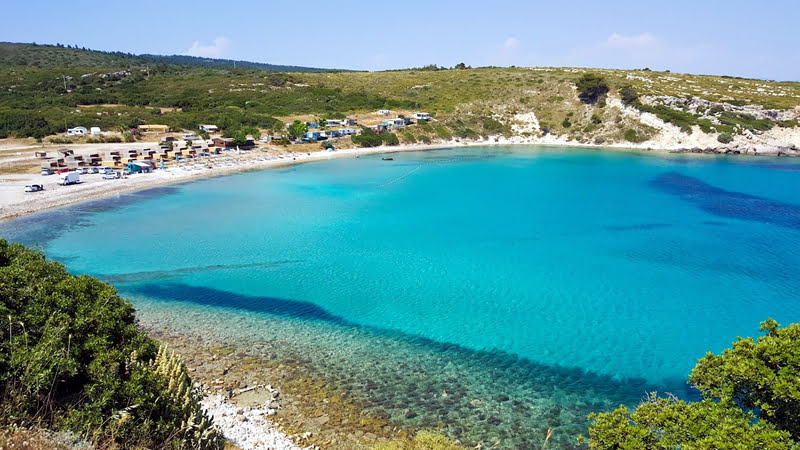Mugla’s Ancient Cities - A Journey Through History
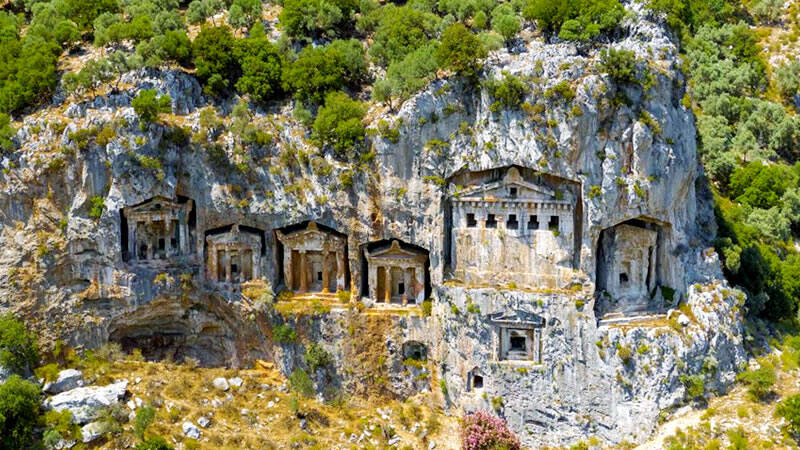
Mugla, located in the southwest of Türkiye, is renowned for its natural beauty and historical richness. Situated at the crossroads of the Aegean and Mediterranean, this city has hosted numerous civilizations from ancient times to the present day. The traces of these civilizations can especially be seen in the ancient cities scattered across Mugla. Ancient cities like Knidos, Kaunos, and Stratonikeia are not only must-visit destinations for history enthusiasts but also for nature and culture lovers. These ancient cities offer visitors a harmonious blend of history and nature, captivating with their unique landscapes and mystical atmospheres.
Located on the banks of the Dalyan River, Kaunos is another significant ancient city of Mugla. Dating back to the 9th century BC, Kaunos lies at the intersection of the Lycian and Carian civilizations and carries traces of these cultures. Among the most striking features of Kaunos are the rock tombs carved into steep cliffs along the riverbank. These tombs showcase the architectural skills and artistic sensibilities of the ancient world. The grandeur of the rock tombs is best explored on a short boat trip from Dalyan.
Kaunos is not only known for its tombs but also for its theater, agora, and bath ruins. The Kaunos Ancient Theater, with a capacity of approximately 5,000 people, sheds light on the social life of its era. The theater’s location, offering a view of the river, is particularly impressive. In ancient times, events held here created unforgettable moments where art and nature intertwined.
Additionally, the surroundings of Kaunos offer numerous opportunities for nature lovers. A walk along the Dalyan Canal takes you deep into history among ancient ruins while providing serene moments with stunning natural landscapes. A visit to this region offers the chance to explore not only the historical but also the natural beauty of Kaunos. For a comfortable and convenient journey, you can make use of car rental options in Mugla.
Located at the westernmost point of Mugla's stunning Datca Peninsula, Knidos is known as one of the prominent settlements of the Ancient Greek period. Founded by the Dorians in the 4th century BC, this ancient city became an important center where science, art, and commerce intersected. Knidos is particularly recognized for its contributions to astronomy, mathematics, and medicine; some of the most distinguished scholars of the ancient world conducted their research here. One of the city’s most famous symbols, the Statue of Aphrodite of Knidos, is regarded as a prime example of ancient aesthetic ideals and attracts art enthusiasts from around the world.
The Temple of Aphrodite is one of Knidos’ most notable structures, offering a breathtaking view from its seaside location. Watching the sunset from a vantage point near the temple provides visitors with an unforgettable experience that combines history and nature. Moreover, the historical harbors of Knidos, which played a significant role in trade and navigation during ancient times, continue to captivate visitors today.
Getting to Knidos is quite simple. Renting a car in Mugla allows for a comfortable journey to Datca and convenient access to the ancient city. A trip by rental car offers flexibility and the opportunity to see the surrounding natural beauty. The landscapes along the way make this historical exploration even more memorable.
Located in Yatagan, Stratonikeia is known as one of the largest marble cities of the ancient world. Founded during the Hellenistic period and maintaining its importance during the Roman Empire, Stratonikeia stands out with its expansive squares, colonnaded streets, and marble structures. Due to these features, Stratonikeia is often referred to as the "Marble City," making it an architectural marvel of the ancient world.
One of the most notable structures in Stratonikeia is the Temple of Augustus and the Temple of Hecate. The Temple of Augustus, built in honor of Roman Emperor Augustus, reflects the political and religious structure of the era. The Temple of Hecate, dedicated to the goddess of magic and mystery, holds great significance for understanding ancient religious beliefs and architectural styles.
Additionally, the bouleuterion (council house) in Stratonikeia provides insights into the city's administrative structure. This building served as a gathering place for the city’s elite to make important decisions. Moreover, structures from the Ottoman period can also be found around the ancient city, demonstrating that Stratonikeia has been home to various civilizations throughout history.
The unique atmosphere of Stratonikeia offers visitors a chance to experience both ancient and Ottoman traces. With ongoing restoration and excavation efforts, the ancient city continues to grow richer with each passing day. A visit to Stratonikeia provides an unforgettable journey for those interested in history and culture.
The ancient cities of Mugla are not only historical treasures but also hold immense potential for tourism. These ancient cities have become indispensable stops for history and nature enthusiasts. The enchanting views of Knidos, the mystical atmosphere of Kaunos, and the majestic marble structures of Stratonikeia offer visitors a unique experience.
These ancient cities also provide various activity options for tourists. For example, you can participate in archaeological excavations in Knidos, go on nature walks in Kaunos, or attend events held in ancient theaters in Stratonikeia. Additionally, in the nearby local villages, you can taste regional dishes and closely observe the cultural fabric of the area. These activities allow visitors to better understand the region and feel the atmosphere of the ancient cities more deeply.
The ancient cities in and around Mugla are indispensable destinations for history and nature enthusiasts alike. The artistic richness of Knidos, the natural beauty of Kaunos, and the architectural splendor of Stratonikeia offer visitors an experience beyond time. These ancient cities have hosted various civilizations throughout history and continue to carry their traces to the present day. Visiting Mugla’s ancient cities not only means taking a journey into the past but also discovering the cultural wealth of this fascinating geography. Everyone who wishes to embark on a journey through history should make sure to explore Mugla’s unique ancient cities.
Exploring these ancient cities in Mugla is best done with a rental car, allowing for the discovery of not only the ancient cities but also the surrounding natural beauty and historical structures. Reliable companies like iZMiRCAR Car Rental provide services that make such exploratory journeys more convenient. Visiting Mugla’s ancient cities means embarking on a journey through history and uncovering the cultural richness of this enchanting geography.
Discovering these ancient cities in Mugla offers an unforgettable experience where history and nature come together. Visitors to the region can trace the remnants of the ancient world while finding peace in unparalleled natural landscapes. A journey by rental car enriches this experience and provides a more flexible exploration opportunity.
Kaunos: The Hidden Paradise of Dalyan
Located on the banks of the Dalyan River, Kaunos is another significant ancient city of Mugla. Dating back to the 9th century BC, Kaunos lies at the intersection of the Lycian and Carian civilizations and carries traces of these cultures. Among the most striking features of Kaunos are the rock tombs carved into steep cliffs along the riverbank. These tombs showcase the architectural skills and artistic sensibilities of the ancient world. The grandeur of the rock tombs is best explored on a short boat trip from Dalyan.
Kaunos is not only known for its tombs but also for its theater, agora, and bath ruins. The Kaunos Ancient Theater, with a capacity of approximately 5,000 people, sheds light on the social life of its era. The theater’s location, offering a view of the river, is particularly impressive. In ancient times, events held here created unforgettable moments where art and nature intertwined.
Additionally, the surroundings of Kaunos offer numerous opportunities for nature lovers. A walk along the Dalyan Canal takes you deep into history among ancient ruins while providing serene moments with stunning natural landscapes. A visit to this region offers the chance to explore not only the historical but also the natural beauty of Kaunos. For a comfortable and convenient journey, you can make use of car rental options in Mugla.
Knidos: The Cradle of Art and Science
Located at the westernmost point of Mugla's stunning Datca Peninsula, Knidos is known as one of the prominent settlements of the Ancient Greek period. Founded by the Dorians in the 4th century BC, this ancient city became an important center where science, art, and commerce intersected. Knidos is particularly recognized for its contributions to astronomy, mathematics, and medicine; some of the most distinguished scholars of the ancient world conducted their research here. One of the city’s most famous symbols, the Statue of Aphrodite of Knidos, is regarded as a prime example of ancient aesthetic ideals and attracts art enthusiasts from around the world.
The Temple of Aphrodite is one of Knidos’ most notable structures, offering a breathtaking view from its seaside location. Watching the sunset from a vantage point near the temple provides visitors with an unforgettable experience that combines history and nature. Moreover, the historical harbors of Knidos, which played a significant role in trade and navigation during ancient times, continue to captivate visitors today.
Getting to Knidos is quite simple. Renting a car in Mugla allows for a comfortable journey to Datca and convenient access to the ancient city. A trip by rental car offers flexibility and the opportunity to see the surrounding natural beauty. The landscapes along the way make this historical exploration even more memorable.
Stratonikeia: The Marble City
Located in Yatagan, Stratonikeia is known as one of the largest marble cities of the ancient world. Founded during the Hellenistic period and maintaining its importance during the Roman Empire, Stratonikeia stands out with its expansive squares, colonnaded streets, and marble structures. Due to these features, Stratonikeia is often referred to as the "Marble City," making it an architectural marvel of the ancient world.
One of the most notable structures in Stratonikeia is the Temple of Augustus and the Temple of Hecate. The Temple of Augustus, built in honor of Roman Emperor Augustus, reflects the political and religious structure of the era. The Temple of Hecate, dedicated to the goddess of magic and mystery, holds great significance for understanding ancient religious beliefs and architectural styles.
Additionally, the bouleuterion (council house) in Stratonikeia provides insights into the city's administrative structure. This building served as a gathering place for the city’s elite to make important decisions. Moreover, structures from the Ottoman period can also be found around the ancient city, demonstrating that Stratonikeia has been home to various civilizations throughout history.
The unique atmosphere of Stratonikeia offers visitors a chance to experience both ancient and Ottoman traces. With ongoing restoration and excavation efforts, the ancient city continues to grow richer with each passing day. A visit to Stratonikeia provides an unforgettable journey for those interested in history and culture.
The Role of Mugla’s Ancient Cities in Tourism
The ancient cities of Mugla are not only historical treasures but also hold immense potential for tourism. These ancient cities have become indispensable stops for history and nature enthusiasts. The enchanting views of Knidos, the mystical atmosphere of Kaunos, and the majestic marble structures of Stratonikeia offer visitors a unique experience.
These ancient cities also provide various activity options for tourists. For example, you can participate in archaeological excavations in Knidos, go on nature walks in Kaunos, or attend events held in ancient theaters in Stratonikeia. Additionally, in the nearby local villages, you can taste regional dishes and closely observe the cultural fabric of the area. These activities allow visitors to better understand the region and feel the atmosphere of the ancient cities more deeply.
The ancient cities in and around Mugla are indispensable destinations for history and nature enthusiasts alike. The artistic richness of Knidos, the natural beauty of Kaunos, and the architectural splendor of Stratonikeia offer visitors an experience beyond time. These ancient cities have hosted various civilizations throughout history and continue to carry their traces to the present day. Visiting Mugla’s ancient cities not only means taking a journey into the past but also discovering the cultural wealth of this fascinating geography. Everyone who wishes to embark on a journey through history should make sure to explore Mugla’s unique ancient cities.
Exploring these ancient cities in Mugla is best done with a rental car, allowing for the discovery of not only the ancient cities but also the surrounding natural beauty and historical structures. Reliable companies like iZMiRCAR Car Rental provide services that make such exploratory journeys more convenient. Visiting Mugla’s ancient cities means embarking on a journey through history and uncovering the cultural richness of this enchanting geography.
Discovering these ancient cities in Mugla offers an unforgettable experience where history and nature come together. Visitors to the region can trace the remnants of the ancient world while finding peace in unparalleled natural landscapes. A journey by rental car enriches this experience and provides a more flexible exploration opportunity.

